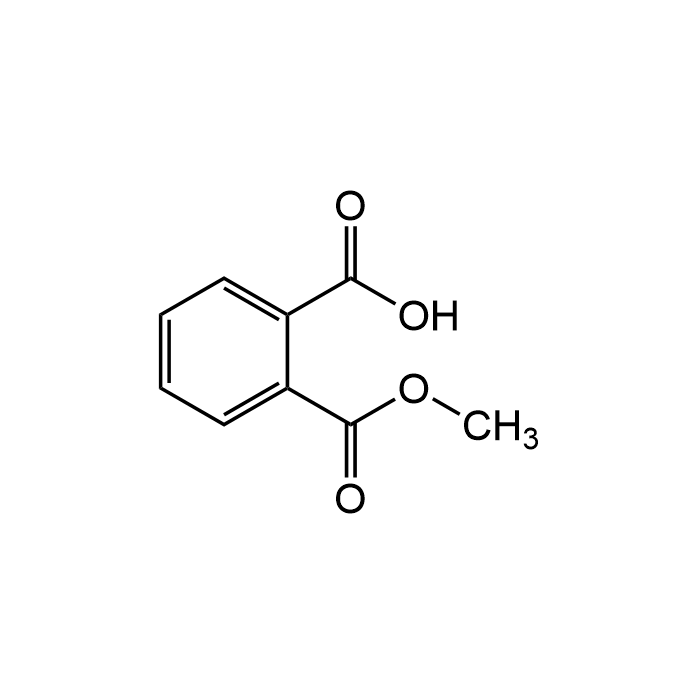Cookie Policy: This site uses cookies to improve your experience. You can find out more about our use of cookies in our Privacy Policy. By continuing to browse this site you agree to our use of cookies.
Chemodex
mono-Methyl phthalate
As low as
110
CHF
CHF 110.00
In stock
Only %1 left
CDX-P0739-G02525 gCHF 110.00

| Product Details | |
|---|---|
| Synonyms | MMP; Monomethyl phthalate; o-(Methoxycarbonyl)benzoic acid; Methyl 2-carboxybenzoate; 2-(1-Methoxycarbonyl)benzoic acid; NSC 8281; D 3 (ester) |
| Product Type | Chemical |
| Properties | |
| Formula | C9H8O4 |
| MW | 180.16 |
| CAS | 4376-18-5 |
| Source/Host Chemicals | Synthetic |
| Purity Chemicals | ≥97% (HPLC) |
| Appearance | White powder or crystals. |
| Solubility | Soluble in ethanol or ether. |
| Identity | Determined by 1H-NMR. |
| Declaration | Manufactured by Chemodex. |
| Other Product Data |
Click here for Original Manufacturer Product Datasheet |
| InChi Key | FNJSWIPFHMKRAT-UHFFFAOYSA-N |
| Smiles | C(OC)(=O)C1=C(C(O)=O)C=CC=C1 |
| Shipping and Handling | |
| Shipping | AMBIENT |
| Short Term Storage | +20°C |
| Long Term Storage | +4°C |
| Handling Advice | Protect from light and moisture. |
| Use/Stability | Stable for at least 2 years after receipt when stored at +4°C. |
| Documents | |
| Product Specification Sheet | |
| Datasheet |
 Download PDF Download PDF |
Description
Mono-methyl phthalate (MMP) is a phthalate metabolite. MMP is studied as a biodegradation product of dimethyl phthalate (DMP), a common plasticizer. It serves as an indicator of phthalate pollution and microbial degradation activity. MMP is a metabolite found in biological fluids (e.g., urine) following exposure to DMP. It's used as a biomarker in human exposure studies to assess phthalate intake and for example phthalates exposure and can be used as a reference for the determination of thyroid cancer and benign nodule. This compound can be used as a reference compound in LC-MS, GC-MS, and other analytical techniques for quantifying phthalate contamination in food, water, and environmental samples.
Product References
(1) W.J. Kozumbo & R.J. Rubin; J. Toxicol. Environ. Health. 33, 29 (1991) | (2) T. Suzuki, et al.; Environ. Sci. Technol. 35, 3757 (2001) | (3) C.H. Hurst & D.J. Waxman; Toxicol. Appl. Pharmacol. 199, 266 (2004) | (4) R. Hauser, et al.; Environ. Health Perspect. 112, 1734 (2004) | (5) P.M. Lind, et al.; Diabetes Care 35, 1519 (2012) | (6) C. Liu, et al.; J. Hazard Mater. 383, 121189 (2020) | (7) W. Tian, et al.; Reprod. Sci. 31, 139 (2024)





